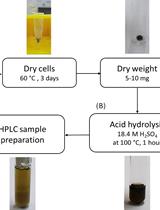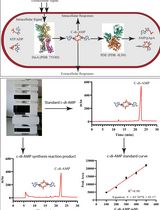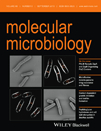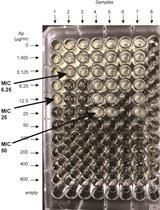- EN - English
- CN - 中文
Rapid Nitrate Reduction Assay with Intact Microbial Cells or Spores
应用完整微生物细胞或孢子进行硝酸快速还原分析
发布: 2014年06月20日第4卷第12期 DOI: 10.21769/BioProtoc.1154 浏览次数: 9055
评审: Anonymous reviewer(s)

相关实验方案

酸水解-高效液相色谱法测定集胞藻PCC 6803中聚3-羟基丁酸酯的含量
Janine Kaewbai-ngam [...] Tanakarn Monshupanee
2023年08月20日 1737 阅读

基于高效液相色谱法的史氏分枝杆菌DisA环二腺苷酸(C-di-AMP)合成酶活性研究
Avisek Mahapa [...] Dipankar Chatterji
2024年12月20日 1702 阅读
Abstract
Many microorganisms have the capacity to use nitrate as a respiratory electron acceptor. Reduction of nitrate is catalyzed by a multi-subunit nitrate reductase that is often located associated with the cytoplasmic membrane and has its active site oriented toward the cytoplasm. This means that nitrate must be transported into the cell and often this occurs concomitantly with the export of the reduced nitrite product. Often nitrate and nitrite transport are coupled through the action of a nitrate: nitrite antiporter. Microbial cells, spores and mycelium harbour intracellular storage compounds such as trehalose or glycogen that, upon metabolism, function as endogenous electron donors for nitrate reduction. It is also possible to use glucose supplied exogenously as a substrate for nitrate reduction. The method described here allows the direct analysis of nitrate reduction by whole cell material without the requirement for artificial electron donors. This method is also applicable to the study of spores, particularly those of Streptomyces species (Fischer et al., 2013). The paper by Fischer et al. 2013 provides examples of datasets for the method presented below.
Keywords: Nitrate reductase (硝酸还原酶)Materials and Reagents
- Freshly harvested Streptomyces spores in water or mycelium in 50 mM MOPS buffer (pH 7)
- Tryptic Soy Broth (TSB) (Sigma-Aldrich, catalog number: 22092 )
- 3-(N-morpholino)propanesulfonic acid (MOPS) buffer (Roth North America)
- Sulfanilic acid (Sigma-Aldrich, catalog number: 251917 )
- N-(1-naphthyl)-ethylenediamine dihydrochloride (Roth North America)
- Hydrochloric acid (Roth North America)
- Sodium hydroxide pellets (Roth North America)
- Soya flour (from local supermarket)
- D-mannitol (Sigma-Aldrich catalogue number 63560 )
- Agar-agar (Kobe I) (Roth North America)
- Sulfanilic acid solution (see Recipes)
- N-(1-naphthyl)-ethylenediamine solution (see Recipes)
- MOPS-buffer (see Recipes)
- SFM agar (see Recipes)
Equipment
- Cotton wool (standard issue from local pharmacy)
- 0.22 µm pore-size filters (PVDF) (Roth North America)
- 30 °C rotary shaker
- Baffled Erlenmeyer flasks (500 ml) (Glasgerätebau Ochs, Laborfachhandel e. K., catalog number: 100500 )
- Standard-sized plastic Petri dishes for bacterial growth and spore preparation
- Gas-tight glass Hungate tubes (16 ml) for anaerobic work with butyl rubber septa (Glasgerätebau Ochs, Laborfachhandel e. K., catalog number: 1020471 )
- Cooled table-top centrifuge (e.g. Eppendorf)
- Cylinder of pure nitrogen gas (e.g. Linde or local supplier)
- Needles 0.6 mm Gauge (B. Braun Melsungen AG)
- Water bath or heating block (Biometra)
- Spectrophotometer measuring absorption in the visible range
Procedure
文章信息
版权信息
© 2014 The Authors; exclusive licensee Bio-protocol LLC.
如何引用
Fischer, M., Falke, D. and Sawers, R. G. (2014). Rapid Nitrate Reduction Assay with Intact Microbial Cells or Spores. Bio-protocol 4(12): e1154. DOI: 10.21769/BioProtoc.1154.
分类
微生物学 > 微生物生物化学 > 其它化合物
微生物学 > 微生物新陈代谢 > 营养运输
您对这篇实验方法有问题吗?
在此处发布您的问题,我们将邀请本文作者来回答。同时,我们会将您的问题发布到Bio-protocol Exchange,以便寻求社区成员的帮助。
Share
Bluesky
X
Copy link













